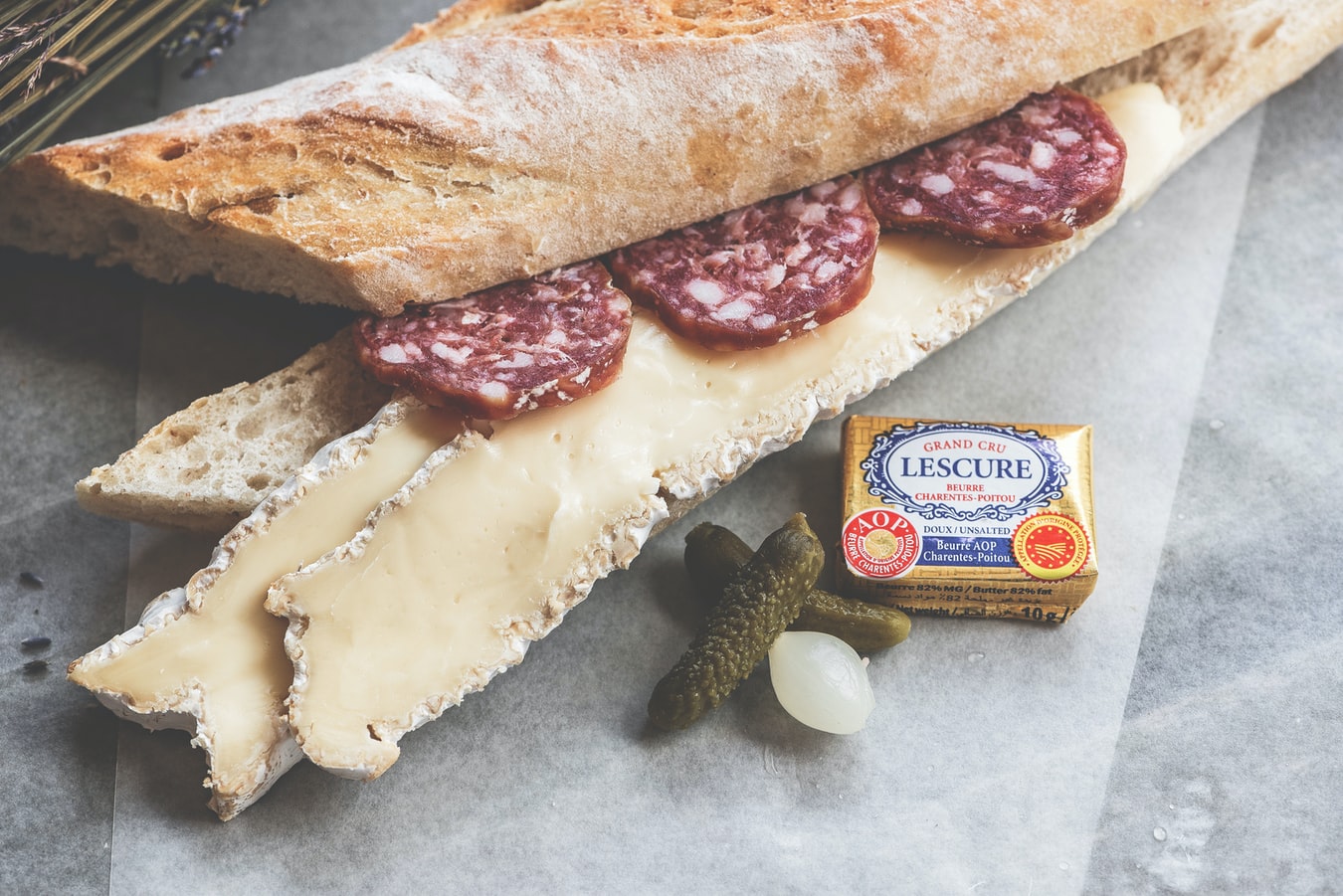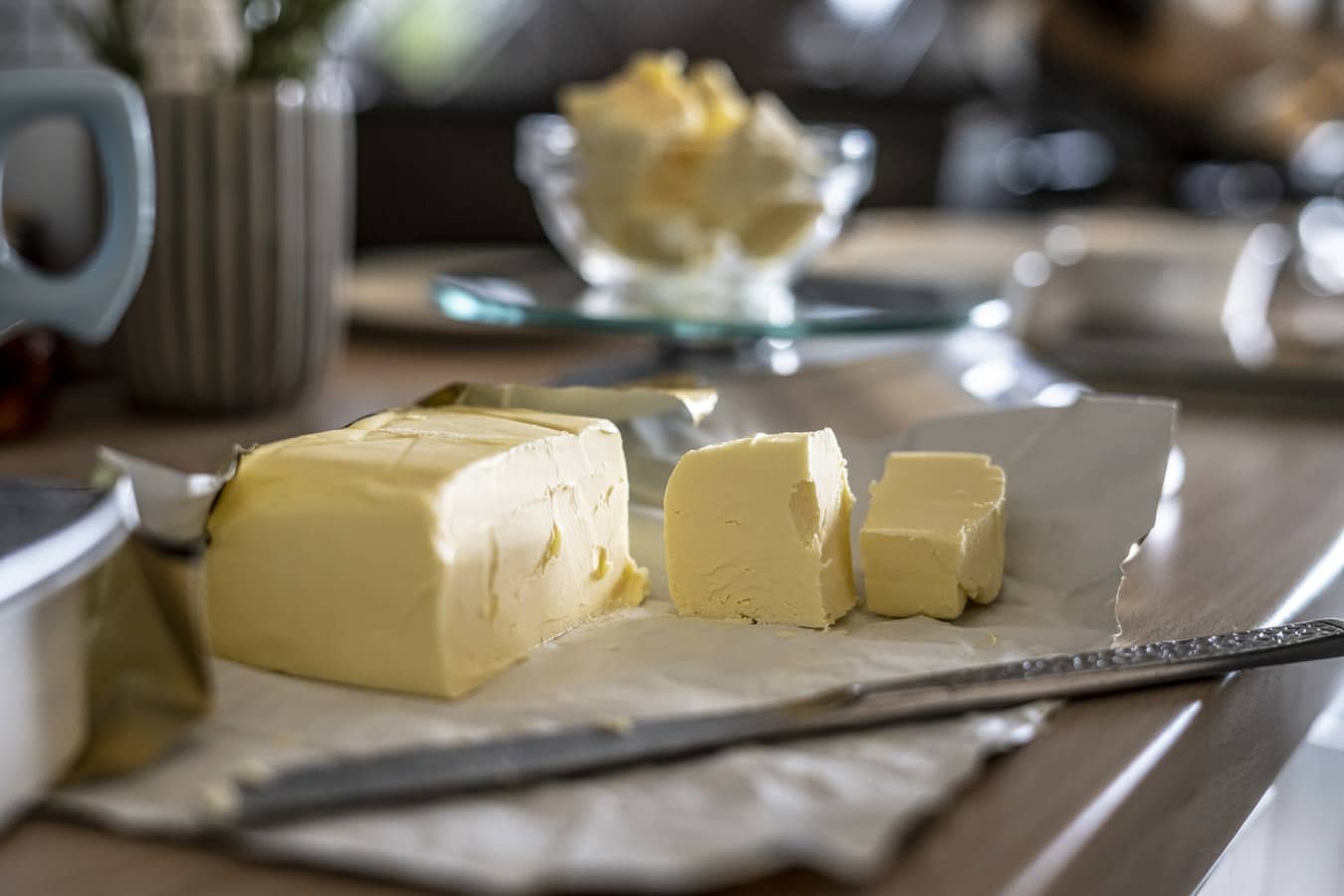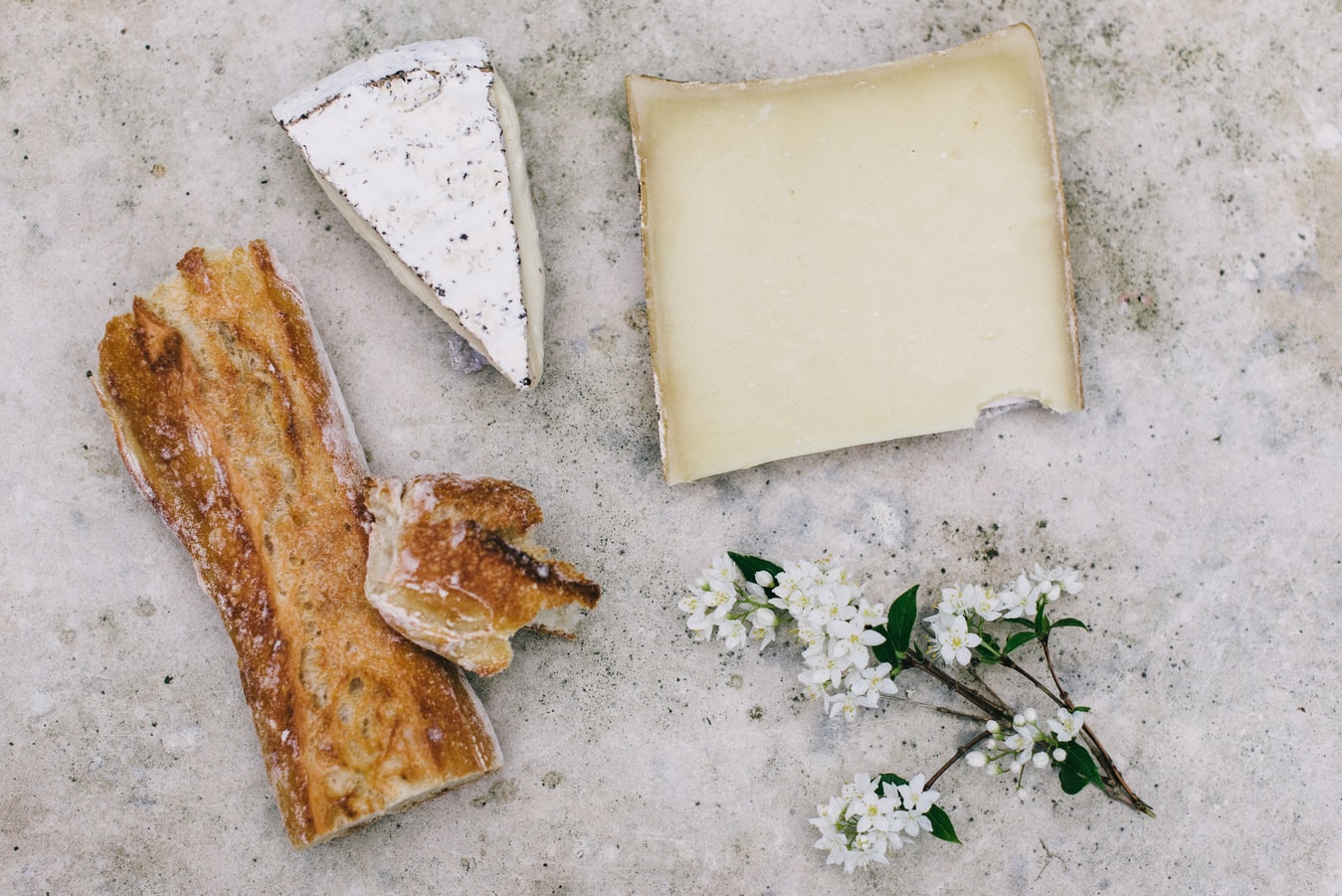Both cheese and butter are among the staples in our kitchens. We use them for making meals and for consuming as they are, on a toast, or (in a case with butter) for baking sweet goodies.
Naturally, since being chemicals-free foodstuffs, cheese and butter have lots of beneficial features. However, people often start wondering whether any distinctions exist between these two dairy goods.
Well, this is going to be out topic for today!
Difference Between Butter And Cheese. A Comparative Analysis
When a “butter vs cheese” question arises, it can be rather difficult to make a decision of which one is better. Indeed, each foodstuff possesses certain benefits, and both butter and cheese are good for our state of health.
Nevertheless, under the closer examination, we can see that one of them is still somewhat better. And of course, let’s not forget that these products are made differently, using distinct techniques, even though they both have milk as the basic ingredient.
So what makes them not look like each other?
- The way they are produced differs. Cheese is a result of a milk protein getting thicker and denser. It may have different forms, be soft and hard with many texture variations in between these two states. Traditionally, all sorts of cheese are made of one of the following kinds of milk: cow, goat, buffalo, or sheep milk. On the other hand, there is butter. Also, rather thick but prone to melting foodstuff that is smooth and fatty. It is a result of milk being vigorously beaten.
- The calorie amount is also different in each of these goodies. A 100 g bar of butter usually contains about seven hundred calories whereas the same amount of cheese will give us approximately three hundred calories. Of course, some sorts of cheese are fattier than others, but even the fattest cheese will not manage to approach butter in terms of calories. Since excessive consumption of calories may lead to gaining weight quickly, sticking to cheese would be better for your waist and body mass. However, do not overeat it, since with cheese it is easier to do that!
- Protein is another beneficial element that we receive when consuming these dairy goodies. We need this element to repair and maintain our tissues, and 100 grams of cheese can give us about twenty-five grams of this so much-needed stuff! On the contrary, butter is way less generous since we can get about 0.8 grams of protein from a bar of 100 grams of this foodstuff.
- Fats. This is what makes ladies worrying since cheese and butter are known as fatty foods. However, not all fats are dangerous, and we even need this element to keep our bodies functioning well. Getting enough unsaturated fats, reducing the consumption of foodstuffs filled with bad kinds of them, and skipping trans-fats will save our health. In terms of fattiness, cheese is the winner since 100 grams of it contain 33 grams of fat on average. Butter, on the other hand, is stuffed with it: eighty grams of which fifty grams are of saturated fats, and those are not healthy!
- In terms of vitamins, both of these goodies show positive results. Cheese provides us with A, K, E, B6, and B12 in addition to some other necessary elements. Butter, in its turn, fill our bodies with the vitamins A, E, K, and B12.
- Minerals also belong to the substances we need for feeling good, especially for having strong teeth and bones. Both butter and cheese are filled with quite many of them which make these foodstuffs equal.

[table id=76 /]
Apparently, the cheese will be the winner of the comparative contest since it is richer in vitamins and other beneficial elements, besides, it is way less fatty and contains no harmful fats.
Ghee And Cheese. Are They The Same?
With the fashion of exotic cuisines and eating traditions, people became familiar with such foodstuff as ghee. It comes from the Indian culinary tradition and is widely used for making all kinds of foodstuffs.
Since it is a sort of dairy goodie, everyone started asking what the distinction is between ghee and cheese, or butter.
Well, the major distinction is how they are made. Cheese, as we already know, is the result of the milky protein coagulation. Ghee, on the contrary, is a sort of clarified cream-originated butter made by simmering the initial product.

This Indian foodstuff is entirely fatty having over sixty percent of saturated fats which make it a risky product for those who suffer from any heart or blood issues. It is blamed for being the reason for heart diseases and clogging veins, so consuming it must be reasonable and in very little amounts.
Apparently, ghee can not be compared to cheese because of completely different methods of manufacturing and the impact they have on our wellbeing.
Cream Cheese vs Butter
With the variety of dairy goodies today, sometimes it can be extremely complicated to make a right choice. If you don’t know what to pick, cream cheese or butter, we would recommend figuring out the main distinctions these foodstuffs have.
Difference between cream cheese and butter
- First of all, they have different texture. Cream cheese is way softer than butter, however, it is also a sort of spread and can be smeared over the toast.
- Unlike butter, cream cheese will not soften when left out. It will become watery and can spoil though.
- Butter has more fat than its dairy counterpart.
- In terms of calories, butter is also an absolute winner being richer source of them.
- Finally, cream cheese is produced of cream that is curdled. Those curdle get heated and processed to achieve the desired texture. Butter, as we all know, is the result of beating milk.
Which is healthier butter or cream cheese? Well, creamy goodie is lower in fats and calories which is good, of course, but it contains stabilizers that is not so well. Its opponent, on the contrary, has no artificial additives but it’s fatty. In terms of usefulness, butter is healthier, and if one sticks to the low-fat variant, it’s also safe for the weight.
What Is the Difference Between Cream Cheese And Cheese?

Naturally, such question would have to be asked sooner or later. The answer lies on the surface: the distinction is in what they are made of. That’s if speaking briefly.
Cream cheese is a result of cream (sometimes a blend of cream and milk) being curdled. The received curdles get heated, stabilizers are added to receive the needed texture, and the foodstuff is ready to consume. This dairy goodies is not matured and is supposed to be consumed fresh.
Regular cheese, on the other hand, is a final result of dairy protein thickening since it is produced from the whole milk. Besides, all sorts of it are aged more or less. In addition, to get the needed texture, level of dryness, and hardness, cheese can undergo different procedures.
It is generally more difficult to make that its creamy counterpart that we can make ourselves almost effortlessly!
What Is Butter Cheese?
Since we already compared the most popular dairy goodies that can be found on our tables, why not discuss such an unusual foodstuff like butter cheese?
Probably, some people didn’t even hear of it or heard but never tried, however, this goodie is worth talking about.
The sort of cheese with butter inside is called Manteca, and this is probably the only member of the huge cheesy family that is actually the cheese that tastes like butter!
It is soft and creamy, with the thick yellow rind, but the insides are surprisingly stringy, smooth, and creamy because it is made of the drawn curd of cow’s milk that is later filled with butter.
Such cheese is manually produced in Italy on a specific farm and is known for the specific, non-milky aroma with flowery notes.
It is better served on bread with some butter underneath since it will reveal all the richness of its flavor.
As we can see, dairy goodies are not so simple as it could seem at the beginning. Even though both regular cheese and butter are one of the basic parts of our daily eating, consuming them must be reasonable.
Yes, cheese is healthier since it is less fatty and calorie-packed, but we need reasonable amounts of butter, as well. The only way it can be done correctly and harmlessly to our bodies is to go for the low-fat options, fortunately, today it is not a problem to find a bar of reduced fat butter.
Also, consider that both these foodstuffs are not lactose-free normally, so if you are intolerant to this element, consider of searching for the lactose-free variations!
Eat healthy and stay well!
[wp-faq-schema title=”Frequently Asked Questions”]

Are butter and margarine the same? I’ve always been wondering since they look and taste almost the same way!
In fact, they are different because butter is of dairy fat (churned cream) whereas margarine is all-vegetable fat (it’s made of veggie oils).
That’s why butter is so smooth and fatty, and margarine is hard and crumbling.
How much butter a day is healthy? I’m so afraid of over consuming it! Is there any “safe doze”?
Well, I can say that fat must take less than 10% of the daily calorie intake. When converting that to grams, I assume it will be about three spoonfuls of butter.
Can anyone help me to make it clear: does butter have more fat than cream? I mean, if we’re talking about the regular, not fat-reduced foodstuff.
Cream is way less fatty, of course! Butter is usually of80-90% fat, and creanis no higher than 30-35%.
Can we use cream cheese instead of butter when cooking?
It can be used as a substitution for butter but you’d better not add it to the dishes that ask for fat since the result won’t satisfy you, I can promise that. For the fatty foods, better go for the fet-reduced butter.